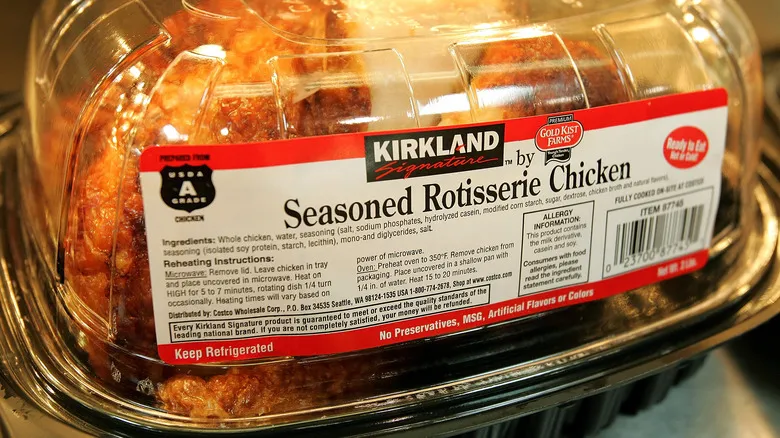Bigger means juicer
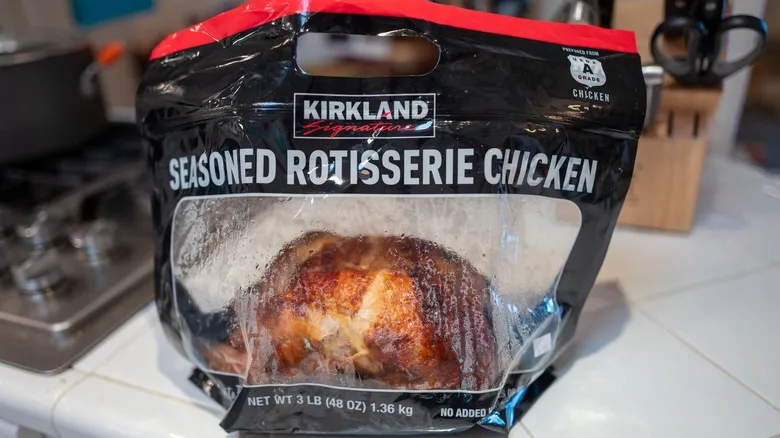
If you have many mouths to feed, it makes sense to choose the largest chicken available. However, there are additional reasons why opting for a bigger rotisserie chicken might be advantageous. Typically, rotisserie chickens are injected with a salt solution to maintain their juiciness and plumpness—so generally, the heavier and more robust the chicken, the juicier it tends to be. This saline injection also imparts a salty flavor to the otherwise bland chicken.
When the chickens were sold in containers, it was straightforward to identify the largest ones (those so plump they touched the lids). However, Costco's new rotisserie chicken bags have introduced some challenges, as some customers are unhappy with the packaging's tendency to leak. Nevertheless, the bags feature a clear viewing window that allows you to assess the size of the chicken—the larger ones will occupy most of this window.
It's important to mention that while bigger can often be better, some individuals prefer medium or smaller chickens to ensure they are cooked thoroughly. One Reddit user shared, "We've ended up with undercooked chickens more than once by choosing the biggest ones. Now, I opt for mid-sized."
Go big for the best value
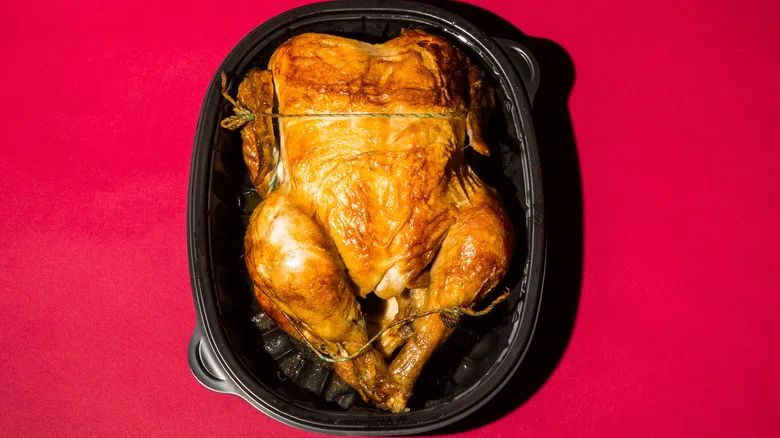
With the price of chicken capped at $4.99, it's logical that Costco shoppers will seek the best value by selecting the largest birds available. After all, the essence of shopping at a big box retailer is about buying in bulk and saving money. To secure the bigger chickens, it's advisable to arrive early, as latecomers often end up with the smallest options.
Some Reddit users have pointed out that the smaller or "underweight" chickens come with a lower price tag. For example, those weighing under three pounds are priced per pound. One individual, likely a Costco employee, shared on the Costco subreddit, "Once the sale price drops below $4.15, we don’t sell them. They get harvested. Anything priced between $4.15 and $4.98 is sold at that price. Once it hits $4.99 or higher, it remains at $4.99 as long as we can fit it in the container." (The term "harvested" refers to the process of cutting up the chickens for use in other deli items, such as chicken Alfredo.) So, if you find yourself arriving late at the deli counter and faced with a selection of smaller birds, at least you can take comfort in knowing you're not paying full price.
Coloring adds flavor
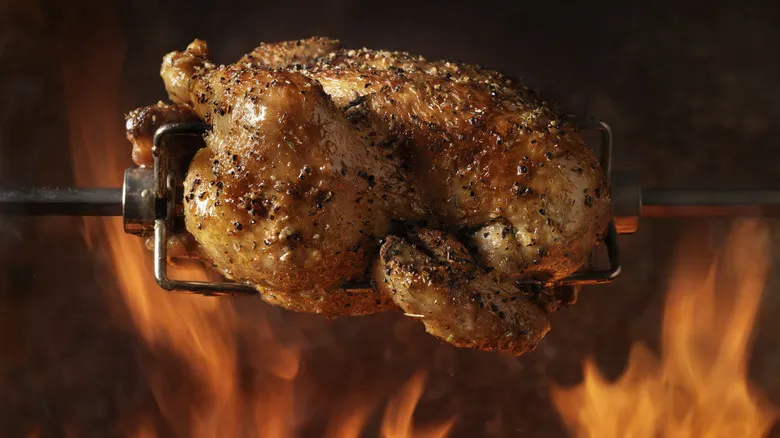
Another indicator of a quality Costco rotisserie chicken is a beautiful golden to dark brown skin, which suggests that the bird is infused with rich roasted flavor (and they certainly look more appealing). It's also advisable to choose one with consistent coloring all around, as this indicates it rotated properly on the spit and is evenly cooked. While a deeper color can enhance flavor, steer clear of those that appear overly dark or burnt, as this may indicate they were overcooked.
In addition to color, consider the texture; ideally, select one with smooth, unwrinkled skin. Wrinkled skin may suggest that the chicken has been sitting for some time. In a Reddit discussion on the Costco subreddit about what to look for when purchasing a rotisserie chicken, one user noted, "While many focus on color and size, I prioritize finding one with the least amount of cracked skin. Chickens with cracked skin tend to be drier." The skin serves as a protective layer against the intense heat during roasting, helping to keep the meat juicy and tender inside. Thus, if the skin is damaged, the chicken is likely to be drier.
Get them when they're fresh
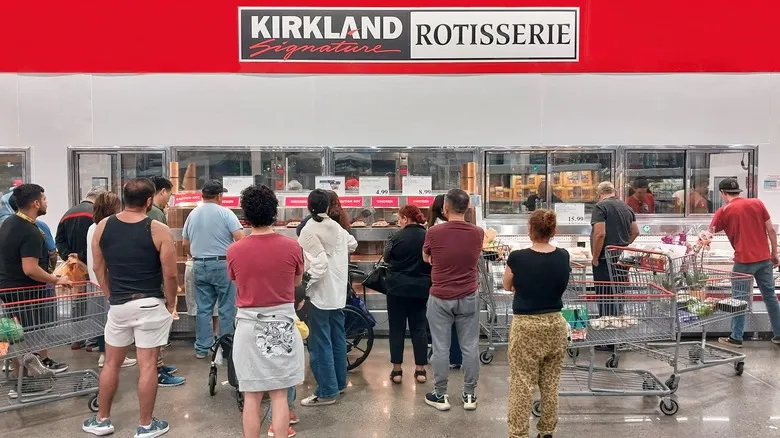
Newcomers to Costco might find themselves puzzled by the crowd gathered at the deli counter, likely wondering what has captured their attention. The answer is simple: these customers are eagerly anticipating the arrival of a fresh batch of rotisserie chickens. Costco adheres to a two-hour policy for its rotisserie chickens, ensuring they stay on the heated shelves for a limited time to maintain freshness. Once the two hours have elapsed, the chickens are removed and repurposed into other deli items, such as chicken wraps, as noted in "The Joy of Costco: A Treasure Hunt from A to Z."
Each chicken container (or bag) is marked with a timestamp indicating when the roasting process was completed, allowing employees to easily monitor when to take them off the shelves. Customers can also check these timestamps to find the freshest chicken available or to determine if they should wait for the next batch. When you hear a bell ring at the Costco deli, it’s time to hustle, as that signals the arrival of fresh chicken. Being first in line gives you the chance to grab the largest, juiciest bird with the best appearance, ideal for enjoying on its own or shredding for soups, salads, and noodle dishes.
Recommended
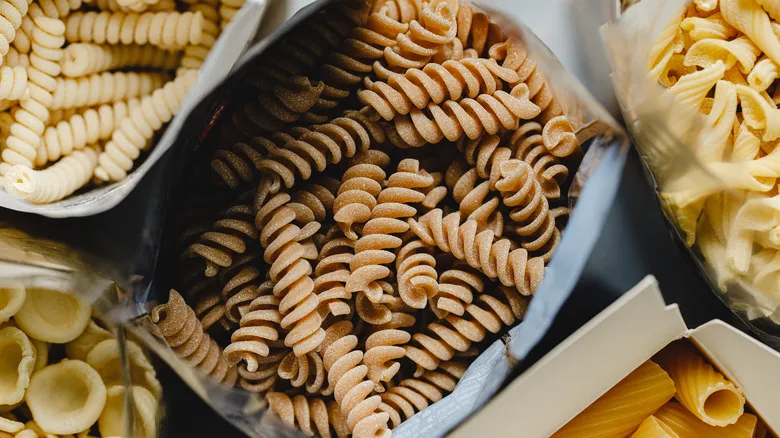
Is Store-Bought Pasta Vegan?
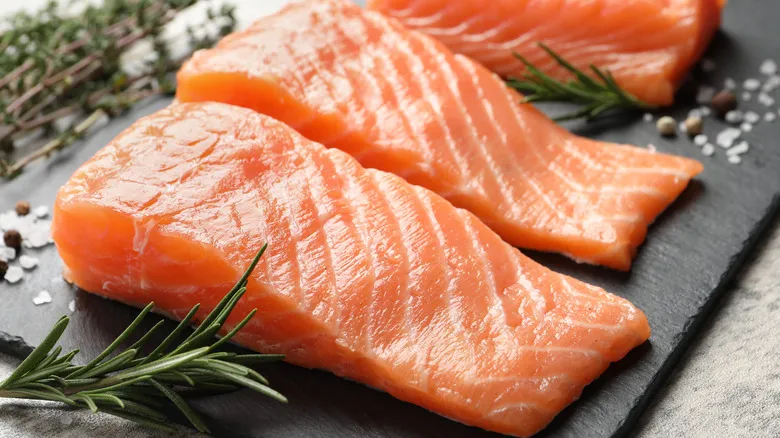
Farmed Vs Wild Salmon: The Must-Know Differences
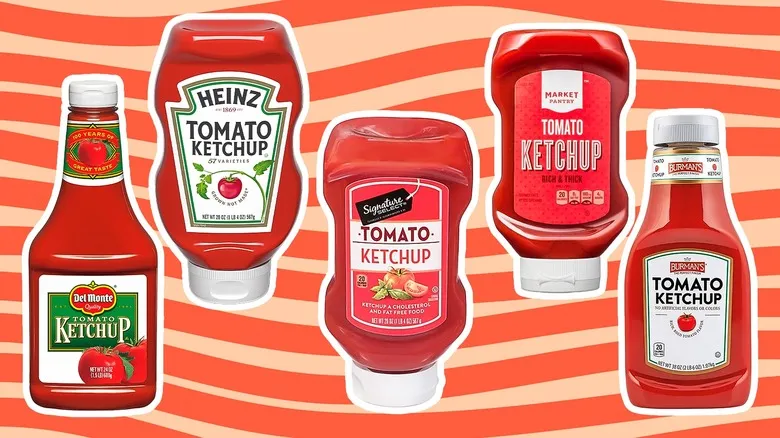
The Definitive Ranking Of Popular Ketchup Brands
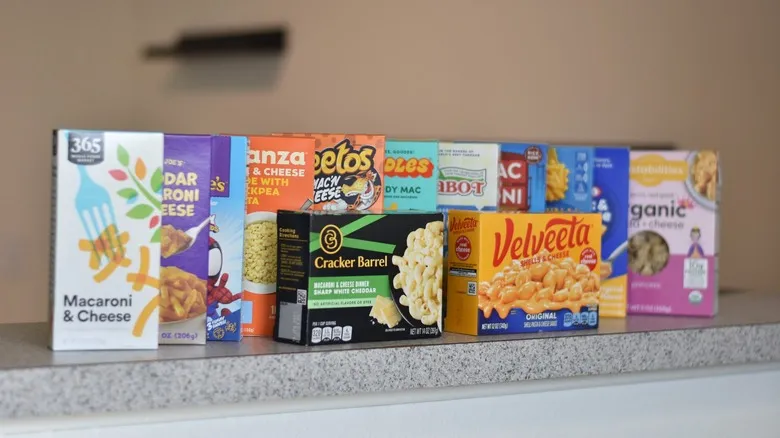
Popular Boxed Mac And Cheese Brands, Ranked
Next up

